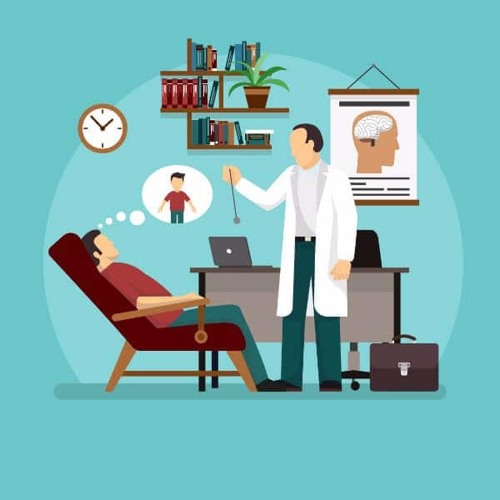
UK hypnotists can be practitioners who practice hypnosis within public settings such as a theatre. The relevant council will issue a license and certificate. Although there is no requirement for a statutory certificate for hypnosis in the UK at the moment, this could change in future. There are many training options available from the government, including a diploma.
For clients to receive high-quality services, a UK certified hypnotist needs to have this certification. For example, The National Counselling Hall of Fame is an international hypnotherapy association that has a recognized and regulated professional body. The UK Council for Psychotherapy, which promotes higher education in the hypnosis field, has created a hypnotherapy section. This section trains qualified hynotherapists in accordance to European Standards.

In the 1950s, and early 1960s there weren't any standards to ensure that a certified hypnotherapist was legitimate and up to standard. It is now mandatory in the United Kingdom to obtain hypnosis therapy certification prior to joining any major trade organization. It will make your profession more credible and enable you to network with colleagues and clients. If you are looking to develop your practice, consider obtaining a hypnosis therapy certification.
Despite claims to the contrary, UK hypnotherapy practitioners are still not regulated. Hypnotherapists view themselves as complementary therapists and seek discreet regulation, which is a departure from other professions. UKCHO's views, however, are representative of those of its constituent associations. It is worth looking for a trusted hypnotherapist to help you with your treatment. There are many well-respected hypnotherapy school in the UK so you don't have to worry too much about the quality.
The WGHR in the UK has conducted surveys to find the most effective hypnotherapists. The survey did not include hypnotherapists so it is difficult to know if a WGHR member can practice hypnotherapy. Rather, the hypnotherapists in the UK should be listed in a public directory. Registering the UK hypnotists in a public directory is a good idea.

There are three main types UK hypnotists. A hypnotist who is trained in psychiatry is the first. You can find it in a dentist, nurse, psychiatrist or acupuncturist. The latter is a trained Hypnotist who can help with many ailments. Different types of sessions can be offered depending on the type and experience of the hypnotherapist.
UK Guild of Hypnosis Practicers (UKGHP) must be registered to hypnotists in the UK. This is the certification body for hypnotists. Its members are qualified in NLP, hypnotherapy, and hypnotherapy. Darren Marks is a renowned London hypnotist. He is a highly skilled London hypnotist. He has been a member of UK Guild of Therapy for several years.
FAQ
What is the difference between a virus and a bacterium?
A virus is an organism microscopic that can't reproduce outside its host cells. A bacterium is an organism that splits itself in two. Viruses can be as small as 20 nanometers, while bacteria can grow up to 1 micron.
Viruses spread easily through contact with infected bodily tissues, such as saliva and urine, semen, vaginal secretions or pus. Bacteria is usually spread directly from surfaces or objects contaminated with bacteria.
Viral infections can be transmitted through skin cuts, scrapes and bites. They may also enter through the nose, mouth, eyes, ears, vagina, rectum , or anus.
Bacteria can get into our bodies through cuts, scrapes and burns, insect bites, or other skin breaks. They may also come into our bodies through food, water, air, soil, dust, or animals.
Both bacteria and viruses cause illness. Viruses can not multiply within the host. They only cause disease when they infect living tissue.
Bacteria can multiply within their hosts and cause illness. They can infiltrate other parts of the body. That's why we need antibiotics to kill them.
What are the 7 best tips to lead a healthy, happy life?
-
You should eat right
-
Exercise regularly
-
Sleep well
-
Get plenty of water.
-
Get enough rest
-
Be happy
-
Smile often.
What is the most healthful lifestyle?
The healthiest lifestyle to live is one where you eat healthy food, exercise regularly, sleep well, and avoid stress. These are the keys to a healthy and long-lasting life.
You can start by making small changes in your diet and exercise routine. You can lose weight by walking 30 minutes each day if you are looking to lose weight. For more activity, you can try swimming or dancing. An online fitness program such as Strava or Fitbit that tracks your activity could be a good option.
Statistics
- WHO recommends reducing saturated fats to less than 10% of total energy intake; reducing trans-fats to less than 1% of total energy intake; and replacing both saturated fats and trans-fats to unsaturated fats. (who.int)
- In both adults and children, the intake of free sugars should be reduced to less than 10% of total energy intake. (who.int)
- WHO recommends consuming less than 5% of total energy intake for additional health benefits. (who.int)
- According to the Physical Activity Guidelines for Americans, we should strive for at least 150 minutes of moderate intensity activity each week (54Trusted Source Smoking, harmful use of drugs, and alcohol abuse can all seriously negatively affect your health. (healthline.com)
External Links
How To
What does "vitamin" actually mean?
Vitamins are organic substances found naturally in food. Vitamins help us absorb nutrients from foods we eat. Vitamins cannot be made by the body; they must be taken from food.
There are two types if vitamins: water soluble, and fat soluble. Water-soluble vitamins dissolve quickly in water. Some examples include vitamin C,B1 and B2 vitamins (thiamine), B2 and riboflavin, B3 and B6 vitamins (niacin), folic acids, biotin, pantothenic acids, and cholesterol. Fat-soluble vitamins can be stored in the liver or in fatty tissue. These include vitamin D, E and K, as well as beta carotene.
Vitamins are classified according to their biological activity. There are eight main groups of vitamins.
-
A - Essential for healthy growth and health maintenance.
-
C is important for nerve function and energy production.
-
D - necessary for healthy bones and teeth.
-
E is required for good vision and reproduction.
-
K - Essential for healthy muscles and nerves.
-
P - essential for strong bones, teeth and tendons
-
Q - aids digestion, absorption and absorption iron
-
R - Required for red blood cell production
The recommended daily intake (RDA), of vitamins varies with age, gender and physical condition. The U.S. Food and Drug Administration has established the RDA values.
For adults 19 years and over, the RDA of vitamin A is 400mg per day. For fetal development, pregnant women need 600 mg per day. Children ages 1-8 require 900 micrograms per day. Infants below one year old require 700mg per day. But, between 9 months to 12 months, the amount drops to 500mg per day.
Children aged 1-18 years need 800 micrograms daily, while children overweight require 1000 micrograms per days. Children who are severely obese or underweight will need 1200 micrograms each day.
2200 mg of vitamin A per day is required for children aged 4-8 who have been diagnosed by anemia.
2000 micrograms are required daily for good health in adults over 50. Women who are pregnant or breastfeeding need 3000 micrograms per day due to increased nutrient requirements.
1500 micrograms are required daily by adults over 70 because they lose approximately 10% of their muscle each decade.
Women who are pregnant or lactating need more than the RDA. Pregnant mothers need 4000 micrograms per daily during pregnancy and 2500 after giving birth. Breastfeeding moms need 5000 micrograms each day when breastmilk production occurs.